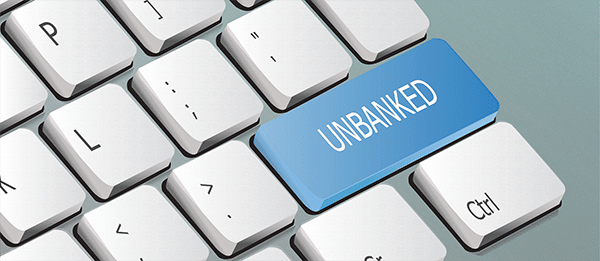Percentage of Underbanked has Grown
The unbanked share of U.S. households fell to 4.2% last year, the regulator said in its biennial survey. But racial disparity persists: 32.3% of unbanked households are Black and 33.4% are Hispanic.
The proportion of unbanked households in the U.S. continued to decline last year, to 4.2%, or 5.6 million households, according to the Federal Deposit Insurance Corp.’s 2023 National Survey of Unbanked and Underbanked Households.
However, the share of underbanked households has grown: About 14.2%, or about 19 million, households were considered underbanked last year, up from 14%, or 18.7 million households, in 2021. Underbanked households hold a bank or credit union checking or savings account, but have also tapped financial services from nonbanks.
Additionally, more consumers are turning to nonbank companies to facilitate money movement: Last year, about 50% of all households used nonbank online payment services, including PayPal, Venmo and Cash App, according to the biennial household survey, released Tuesday. That’s up from 46.4% in 2021.
The overall unbanked rate is at its lowest level since the FDIC launched the survey in 2009. In 2021, 4.5%, or 5.9 million U.S. households, were unbanked. The survey, fielded to about 30,000 U.S. households, gathers information on bank account ownership, along with other financial products and services consumers use.
Unbanked Statistics
In 2023, reasons for lacking a bank account remained the same as previous years: “Don’t have enough money to meet minimum balance requirements” was the most cited reason, followed by “don’t trust banks,” the FDIC said. Two-thirds of unbanked households relied entirely on cash.
The results also highlighted persistent racial disparities: Last year, Black and Hispanic households were more than five times as likely to be unbanked, and more than twice as likely to be underbanked, compared to white households.
Black and Hispanic households were also more likely to lack “mainstream credit,” such as a credit card, auto loan or other credit product that shows up on a credit report. Black households represented about 12.9% of households overall last year, but made up 32.3% of unbanked households. Similarly, Hispanic households made up 14.8% of all households last year, but comprised 33.4% of unbanked households.
“Significant disparities in access to the banking system for minority, lower income, disabled, and single-parent households still exist and need to be addressed,” FDIC Chairman Martin Gruenberg said in a press release.
As the makeup of unbanked households has evolved, these households are less disproportionately young; some are more tech-savvy, but others lean on cash primarily, the FDIC noted.
“As a result, economic inclusion strategies that may have worked in the past may not be as compelling today,” the agency said in its executive summary.
Although underbanked households have a bank or credit union account, they might turn to nonbanks for transaction services such as money orders, check cashing or international remittances, or mainstream credit alternatives such as rent-to-own services, or payday, pawn shop, auto title or tax refund anticipation loans, the FDIC said.
About one in five Black, Hispanic, American Indian or Alaska Native, Native Hawaiian or other Pacific Islander households were underbanked, in contrast to one in 10 white households. Close to one in four households without a high school diploma were underbanked, compared to 10.4% of households with a college degree.
Digital Divide
About 81.6%, or 109.1 million households, were fully banked in 2023. Mobile banking was the primary method of bank account access for nearly half of banked households, and growth in its use was widespread across household characteristics, including age groups.
As more bank customers flock to mobile access, opportunity remains for lenders. “Smartphones are ubiquitous among banked consumers, but many are not using them to improve their banking experience,” the FDIC said in the executive summary. “Significant untapped potential exists for banks to engage these consumers and help them use technology to sustain and grow banking relationships.”
While mobile banking use has risen over the last decade, both bank teller and online banking use have dropped. Still, bank teller use remains more prevalent among lower-income households, less-educated households, older households, and those not in metropolitan areas, the FDIC said.
About three-quarters of all households had a credit card last year, but about 15.7% lacked mainstream credit; still, the latter figure declined from 20% in 2017, the FDIC said. Among unbanked households, however, 78.4% had no mainstream credit.
IntelliPay eCash
Over 19 million U.S. households lack mainstream credit including access to credit cards and online banking services. Millions more do not want to disclose their sensitive financial data online. To bridge the gap and provide cash customers with an easy, secure way to pay with cash online is eCash. An eCash option at checkout will help you attract more customers, including customers who struggle with complexity, security concerns, prefer cash payments, or who have no access to online payments.
Plus, eCash promotes financial inclusion by eliminating barriers to digital financial services and providing online payments options for millions of consumers. To learn more about eCash click here.
Adapted from: Underbanked US population grows to 14.2%, FDIC finds, November 13, 2024, Caitlin Mullen, bankingdive.com


